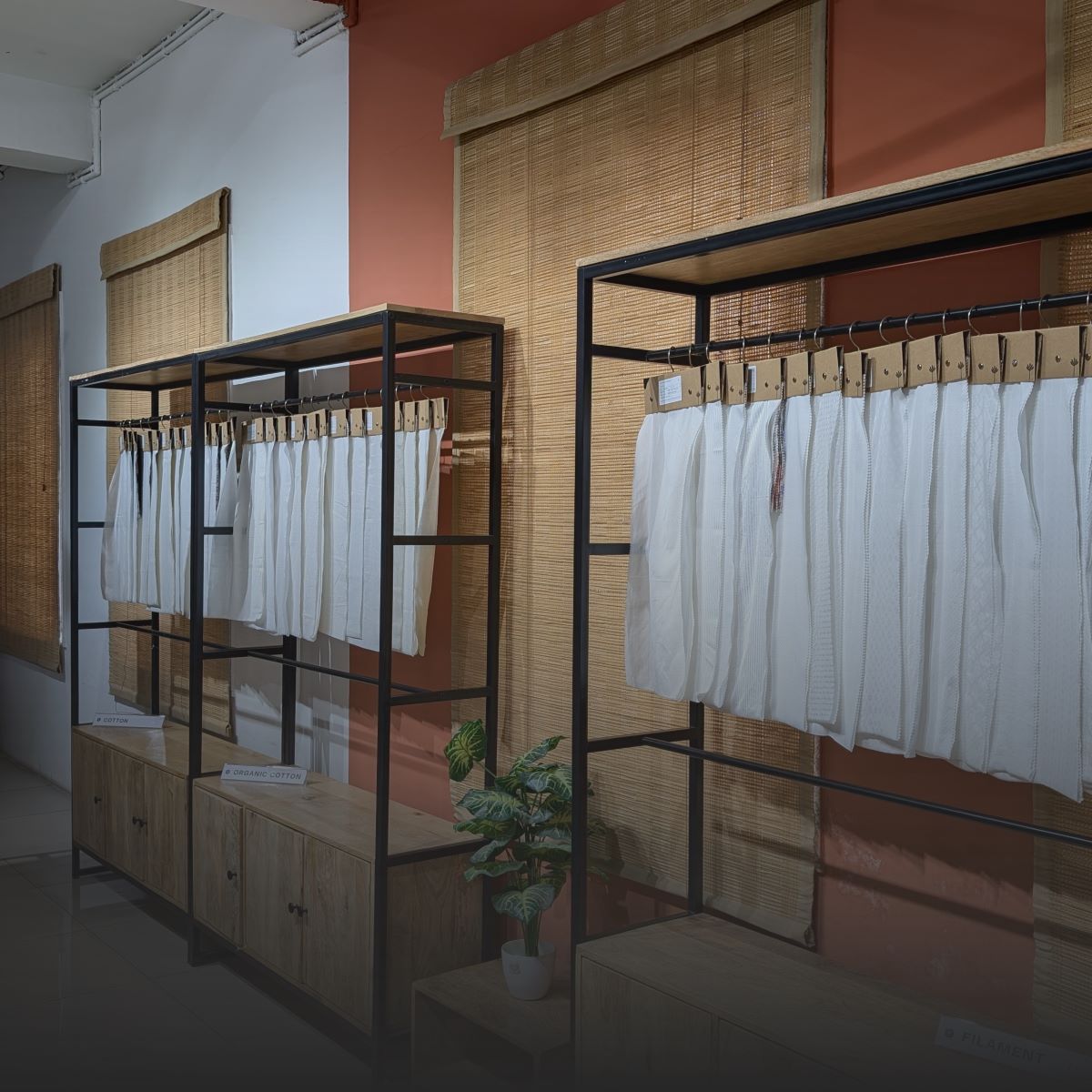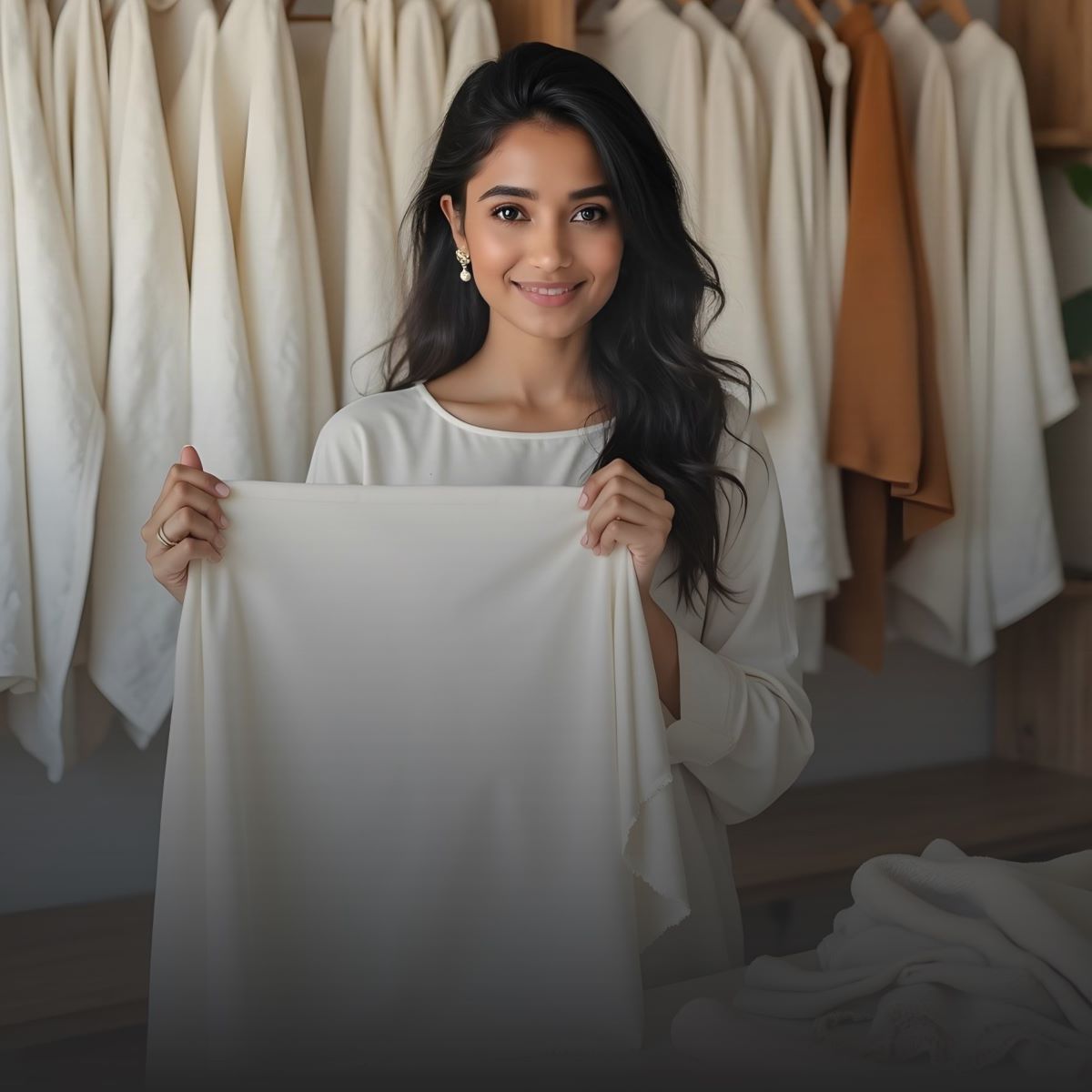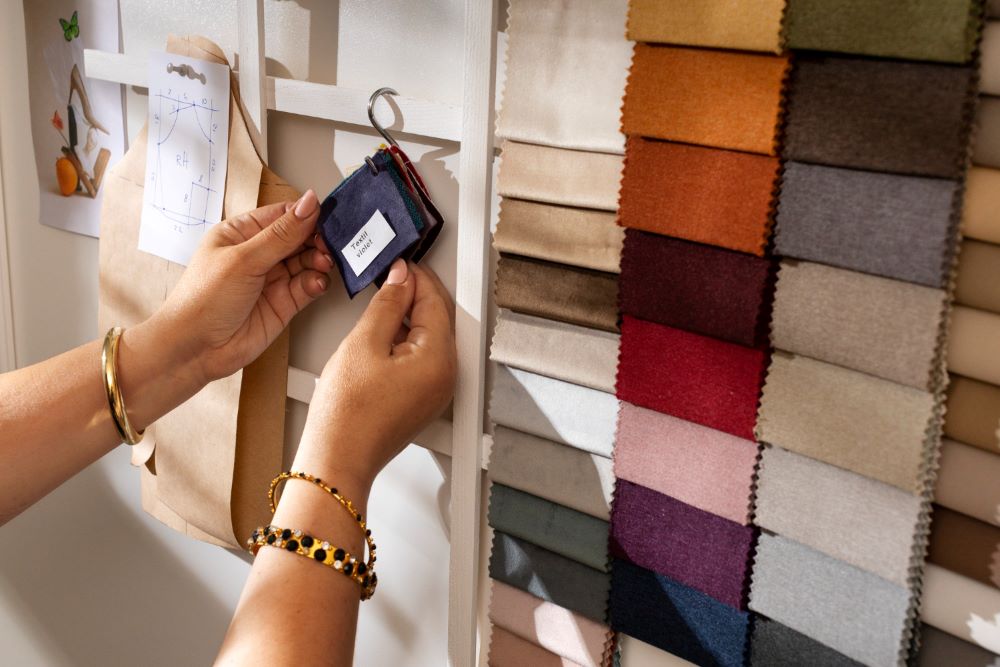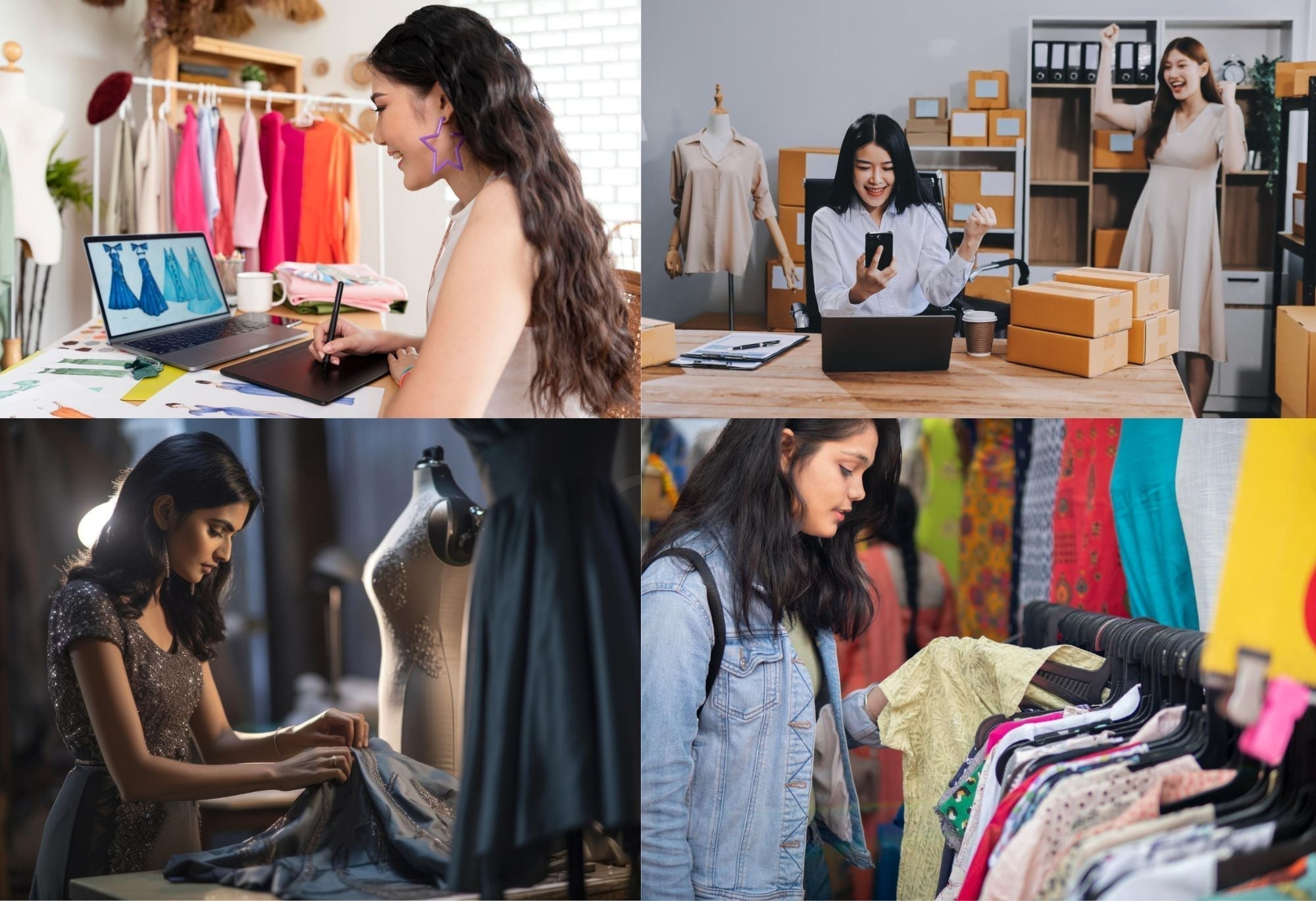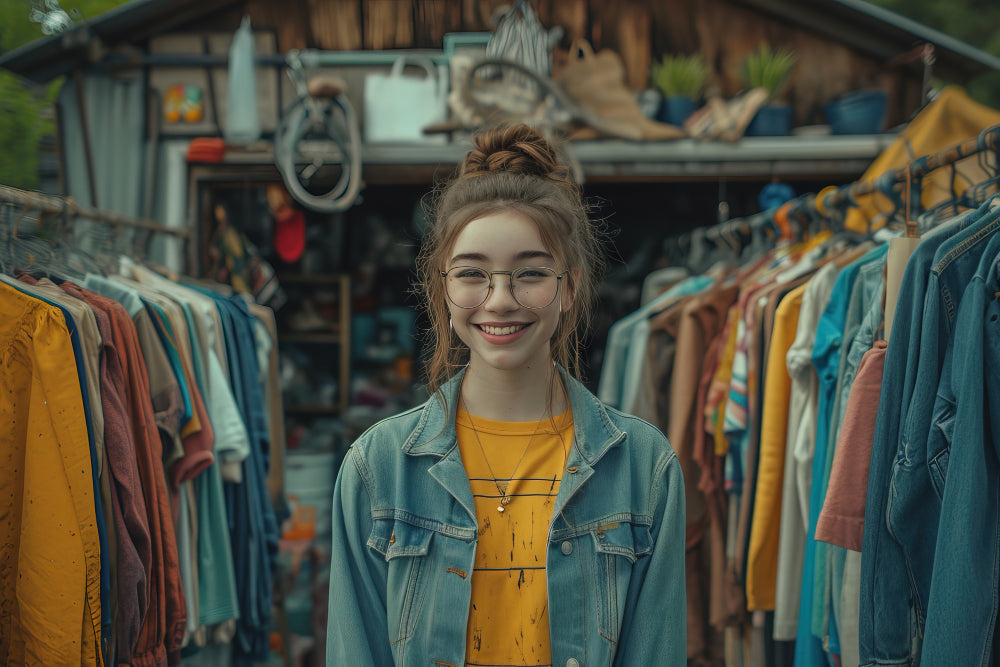The global fashion market is growing fast with revenue expected to reach around USD 880.91 billion by 2025. By 2029, it could go up to USD 1.18 trillion. This growth brings significant opportunities for fashion brands but comes with new challenges.
The rising cost of raw resources is one of the major issues of our time. According to a 2022 survey, 89% of leading fashion executives predicted the supply chain would be impacted. This indicates that selecting cloth is no longer based on look or texture.
If you are starting your fashion brand or planning to expand, sourcing the right fabric is key. The quality of your fabric affects how your product looks, feels and sells. Plus, it impacts your pricing, profit margins and brand reput ation.
In this guide, we will help you understand how to find the best fabric suppliers and share valuable tips for sourcing fabric the smart way.
1. Clarify Your Fabric Needs Before You Start

Here are a few simple questions to ask yourself:
-
What am I making?
Are you designing casual clothes, party wear, sportswear or kids’ clothing? The fabric you choose should match the type of clothing.
-
Who will wear it?
Think about your customers. What kind of fabric would they like? Should it be soft, strong, stretchy, shiny or eco-friendly?
-
What kind of fabric do I need?
Decide if you need cotton, silk, linen, polyester or other types. Also, think about how thick, light or flowy the fabric should be.
-
How much fabric do I need?
Are you just making a few samples or producing in bulk? Knowing the amount will help when talking to suppliers.
-
What is my budget?
Set a price range that you can afford for each type of fabric, including shipping or any extra costs.
2. What is Fabric Sourcing and Why It Matters

Fabric sourcing means finding the right supplier who can provide the fabric you need for your clothing line. It also involves making sure the fabric is delivered on time, stays within your budget and arrives in good condition. It is more than just buying fabric. It is about making smart choices that support your fashion business.
The fabric you choose affects how your clothing looks, feels and fits. It also impacts the quality, price and how your customers experience your brand. This is why fabric sourcing is one of the most important steps in the production process.
There are two main ways to handle fabric sourcing:
-
In-house sourcing means you take care of everything yourself. You do the research, contact suppliers and place the orders. This gives you full control but takes more time and effort.
-
Outsourcing means you work with a fabric-sourcing agent. They use their own network to find and manage fabric for you. This saves time but may cost more and you rely on their choices.
In short, fabric sourcing is where your design ideas start becoming real products. Doing it right helps your fashion brand grow with less stress and fewer mistakes.
3. Types of Fabric Suppliers You Can Work With

Retailers
Retailers are regular fabric stores where you can buy small amounts of fabric. They are great if you're a beginner working on a sample or only need a few meters. But keep in mind, prices are usually higher and fabric options may be limited.
Wholesalers
Wholesalers sell fabric in larger quantities at better prices. They’re perfect for small or growing fashion brands that need more fabric. You won’t always get custom options, but you’ll get good variety and quality.
Jobbers
Jobbers sell leftovers or extra fabric from big mills and factories. These fabrics are usually cheaper and different from what you find in stores. But you might not see the exact fabric once they're gone again. That’s why jobbers are great for small orders or unique designs.
Traders
Traders help find and sell fabric based on what you need. They don’t always keep fabric in stock but will search and buy for you. They may charge a fee or work on commission. Traders are helpful if you’re looking for something specific but don’t know where to find it.
Converters
Converters buy plain fabric and then add color, print or finishing as per your design. If you want custom fabric, converters are a great choice. They often have many options but usually need you to buy a bigger quantity.
Fabric Sourcing Agents
These are people or companies that help connect you with the right fabric suppliers. They often have many contacts and can get better deals or low minimum orders. You may need to pay a fee but they save you time and effort.
Factories
Some factories make both fabric and finished clothes. They are like a one-stop shop for big brands that want everything made in one place. These factories usually ask for large orders and don’t work with small businesses.
Quick Comparison Table:
|
Supplier Type |
What You Get |
Good For |
MOQ |
Customization |
Price |
|
Retailer |
Small pieces of fabric |
Beginners, samples |
Very Low |
No |
High |
|
Wholesaler |
Bulk fabric, many options |
Small businesses |
Medium |
Limited |
Fair |
|
Jobber |
Leftover/discontinued fabrics |
Unique or small projects |
Low |
No |
Low |
|
Trader |
Sourcing help from different suppliers |
Help finding fabric |
Varies |
Some |
Medium |
|
Converter |
Fabric dyed or printed your way |
Custom fabric designs |
High |
Yes |
Medium |
|
Sourcing Agent |
Connects you with the right suppliers |
Time-saving, cost deals |
Medium |
Depends |
Low-Medium |
|
Factory |
Fabric and clothing production |
Large scale brands |
Very High |
Yes |
Best value |
4. Where to Find Reliable Fabric Suppliers in India
India is one of the best places in the world to find fabric. Different cities are known for different types of textiles and many businesses rely on Indian suppliers for quality fabrics at good prices.
Top Cities for Fabric Sourcing
Here are some popular cities in India where you can find different kinds of fabric:
-
Surat – Famous for synthetic fabrics like georgette and polyester.
-
Jaipur – Known for cotton, block prints and handloom fabrics.
-
Tirupur – Best for cotton knits used in t-shirts and casualwear.
-
Ludhiana – Popular for woolen and winterwear fabrics.
-
Erode and Karur – Known for home furnishing fabrics like bedsheets and curtains.
Each city has its own specialty, so choose based on the fabric you need.
Online Platforms vs. Offline Markets
Offline markets let you touch and feel the fabric before buying, but they take time and travel.
Online platforms like IndiaMART and TradeIndia are faster, but it’s not always easy to check the quality or trust the seller.
Why Fabriclore is the Best Fabric Supplier in India and Globally
If you're looking for a trusted fabric supplier, Fabriclore is a great choice. It helps fashion designers, clothing brands and small businesses find the right fabric easily.
Why Choose Fabriclore?
-
Offers many types of fabric like cotton, linen, silk, viscose, modal, polyester and eco-friendly options like Lenzing™, Liva™, Bemberg™ and organic cotton.
-
Low Minimum Order Quantity (MOQ), so you don’t need to buy in bulk.
-
Choose from RFD (ready-for-dyeing) fabrics, mill-dyed and printed fabrics.
-
Printing options include screen printing, digital printing, hand block printing and solid dyeing.
-
Fabrics go through a quality check and test certificates are available if needed.
-
Support with custom prints, sampling and quick help from the team.
5. Smart Budgeting and Cost Management for Fabric Sourcing
|
Step |
What to Do |
|
1. Estimate the Cost per Garment |
Calculate fabric cost per garment, then add costs for stitching, trims, labels and packaging. |
|
2. Balance Quality with Affordability |
Choose a fabric that looks good, lasts longer and is affordable. |
|
3. Plan for Extra Costs |
Include hidden costs like sampling, fabric testing, shipping and import duties. |
6. Questions You Must Ask Fabric Suppliers
Before buying fabric, ask these questions to make sure you get the right quality, price and service:
1. What is the minimum order quantity (MOQ)?
Ask how much fabric you need to buy at once. Some suppliers allow small orders, while others only deal in bulk.
2. Can I customize the fabric?
If you want your own design, color or print, check if they offer customization services.
3. What does the fabric feel and look like?
Ask about the weight, softness, shine and texture. Request a sample to see and feel it before buying in bulk.
4. What is the fabric made of?
Know the fiber content (like cotton, silk, polyester, etc.) to understand how it will perform in terms of comfort, strength and care.
5. Does the fabric meet quality standards?
Make sure it passes the required quality or safety tests for your use, like for clothes or furniture.
6. How should I care for this fabric?
Ask how to wash, dry and handle the fabric to keep it looking good and lasting longer.
7. Can I get color swatches or samples?
Getting samples helps you check the exact color, texture and how it drapes.
8. How does the fabric look in different lights?
Colors may look different in sunlight or indoor lights, so check the fabric under different lighting if possible.
9. How long will it take to receive the fabric?
Ask how much time the supplier needs to prepare and deliver the fabric. Also, check if there are extra charges for fast delivery.
10. Is the fabric eco-friendly?
If you care about the environment, ask how the fabric is made. Check if it’s made with organic materials or safe dyes.
11. Do you have any certifications for sustainability?
Look for certifications that show the supplier follows eco-friendly and fair practices.
Asking these questions will help you choose the right fabric supplier and avoid any problems later.
7. Basic Fabric Terms You Should Know Before Buying
When buying fabric, especially in bulk or from international suppliers, it's important to understand some key terms. These help you make informed choices, avoid confusion and manage your costs better.
1. GSM (Grams per Square Meter)
GSM tells you how heavy or light a fabric is. Lightweight fabrics like chiffon have low GSM, while heavier ones like denim have high GSM.
2. Weaves
The weave decides the texture and strength of the fabric:
-
Plain weave: simple and strong
-
Twill weave: shows diagonal lines
- Satin weave: smooth and shiny
3. Dyeing and Printing Techniques
Different methods give different looks:
-
Solid dyeing: one solid color
-
Digital printing: detailed prints, full of colors
-
Screen printing: ideal for bulk production
- Hand block printing: traditional and handcrafted
4. Fabric Finishes
These improve how the fabric feels or works:
-
Water-resistant
-
Soft touch
- Wrinkle-free
5. Important Certifications
Certifications prove the fabric is safe and sustainable:
-
GOTS – for certified organic textiles
-
OEKO-TEX® – free from harmful chemicals
- LENZING™ – for eco-friendly fabrics like TENCEL™
6. Common Sourcing Terms
-
MOQ (Minimum Order Quantity) – The minimum you need to order
-
Lead Time – How long production and delivery take
-
Swatch – A small sample piece to check the look and feel
- RFD (Ready for Dyeing) – Fabric you can dye or print later
7. Shipping Terms (For Imported Goods)

- F.A.S. (Free Along Side) – Cost includes delivery to the port, but not loading or shipping.
- F.O.B. (Free On Board) – Includes loading at the port. You (the buyer) pay shipping and take responsibility once it’s on board.
- C.I.F. (Cost, Insurance, Freight) – Covers cost, loading, shipping and insurance. You still pay customs and taxes.
- L.D.P. (Landed Duty Paid) – Everything includes shipping, customs and duties. You get the goods ready to use.
8. Country of Origin vs. Ships From
-
Country of Origin is where the fabric was made.
-
Ships From is the location from where it’s dispatched. A fabric can be made in India but shipped from Dubai.
Learning these basic terms makes it easier to talk to suppliers, compare quotes and avoid unexpected costs.
8. Common Fabric Sourcing Challenges and How to Overcome Them:
|
Problem |
What Happens |
How to Fix It |
|
Fabric Quality Changes |
The fabric you get in bulk may not match the sample. |
Always ask for a sample first. Buy from trusted suppliers who check quality. |
|
Hard to Communicate |
It's difficult to explain what you want if the supplier speaks another language or is in a different time zone. |
Use simple words, clear pictures, and easy instructions. Choose suppliers who reply quickly. |
|
Late Delivery |
The fabric may arrive later than expected. |
Ask about delivery time before you order. Pick suppliers who deliver fast or have fabric in stock. |
|
High Minimum Order Quantity (MOQ) |
Some suppliers ask you to buy a lot, which is tough for small businesses. |
Pick suppliers like Fabriclore who take small orders. Stay in touch with them to get better prices later. |
9. Red Flags: Where NOT to Source Your Fabric
1. No Information About the Supplier
If a supplier doesn’t have a proper website, reviews or company details, it’s better to stay away. You should always know who you are buying from.
2. Fake or Missing Certificates
Some suppliers may say their fabric is certified (like GOTS or OEKO-TEX) but can’t show real proof. Always ask for valid certificates, especially if you want sustainable fabric.
10. What to Do Once You’ve Found a Good Supplier
1. Ask for Samples
Before buying a lot, get a fabric sample. Check how it feels, looks and lasts after washing.
2. Build a Good Relationship
Stay in touch with the supplier. If they know you well, they will give better service.
3. Talk About Better Deals
Once you trust them, you can ask for discounts, faster delivery or lower minimum orders.
Conclusion
Sourcing fabric takes planning and smart decisions. Start by researching suppliers, asking the right questions and requesting samples. Learn basic terms to ensure clear communication.
Once you find a good supplier, build a strong relationship. Be patient and professional. A smart sourcing strategy helps your brand grow. It provides the right support and ensures fabric quality.
